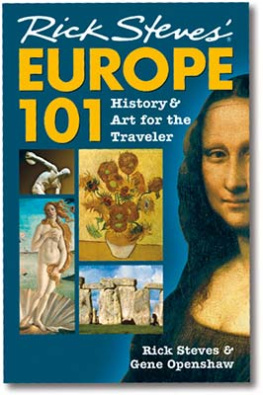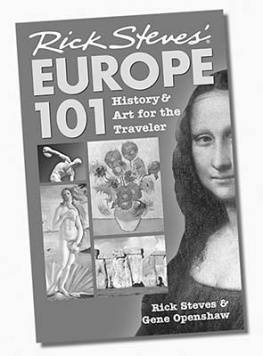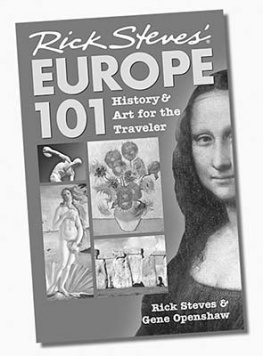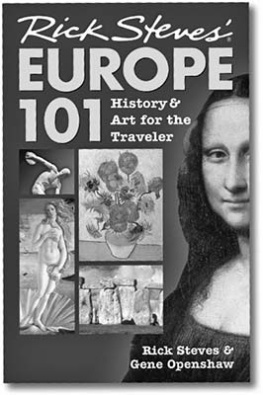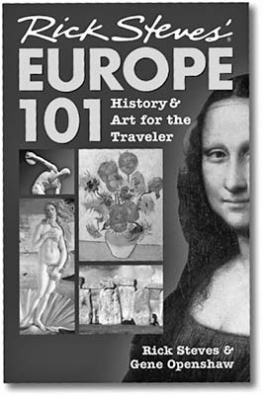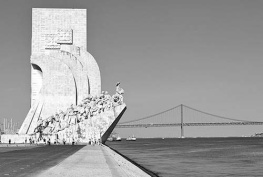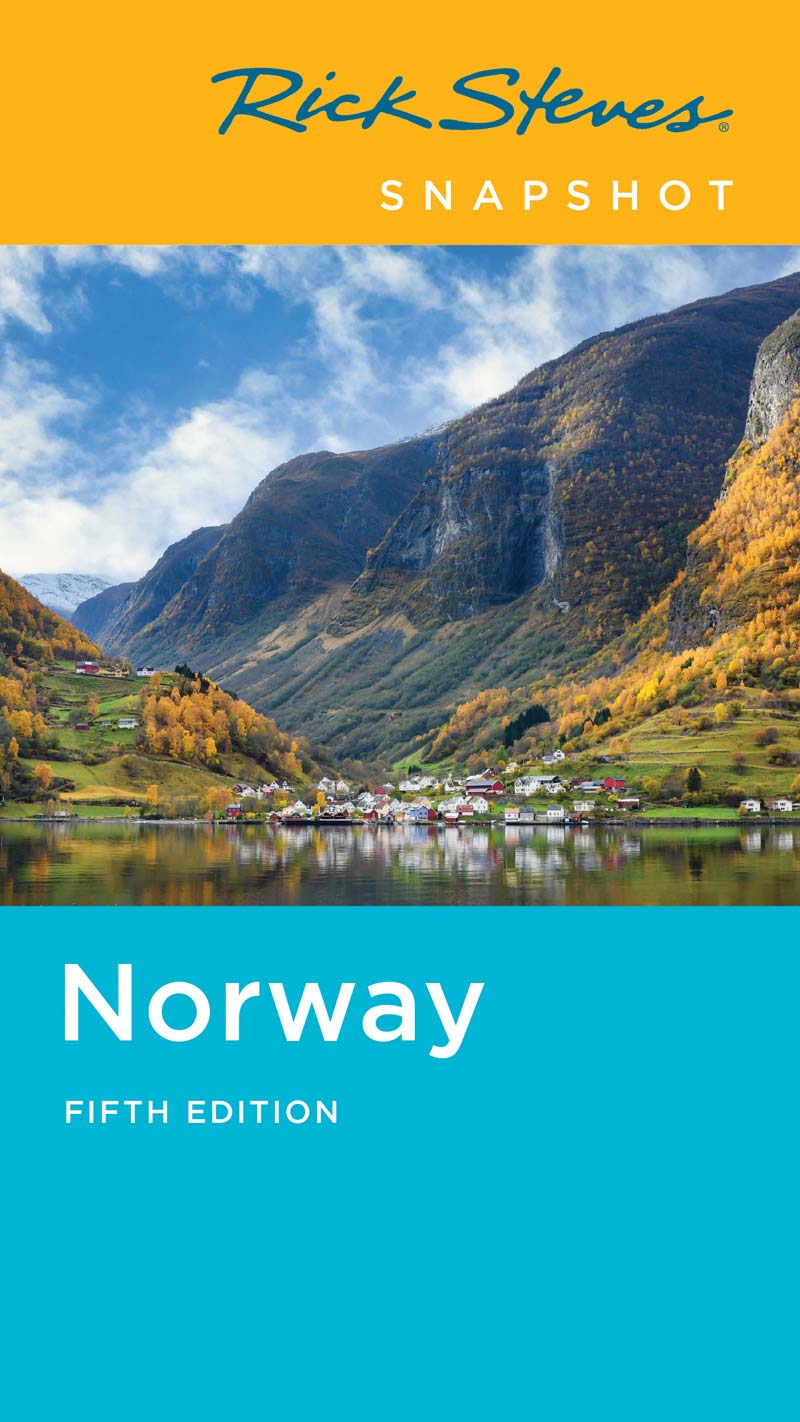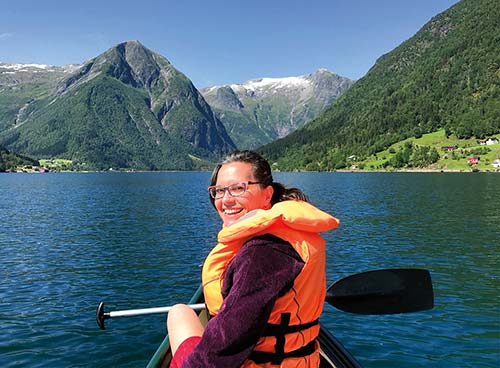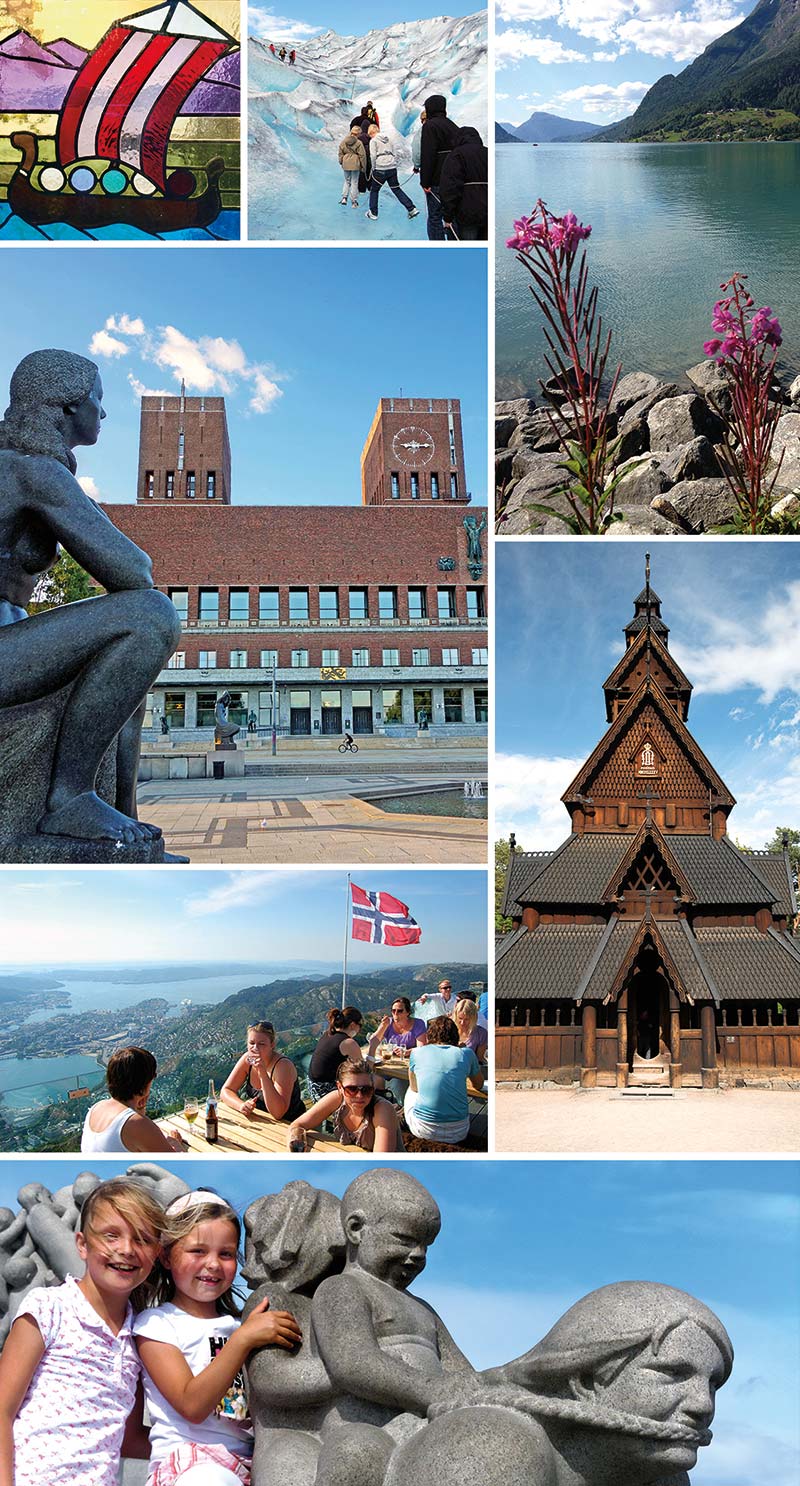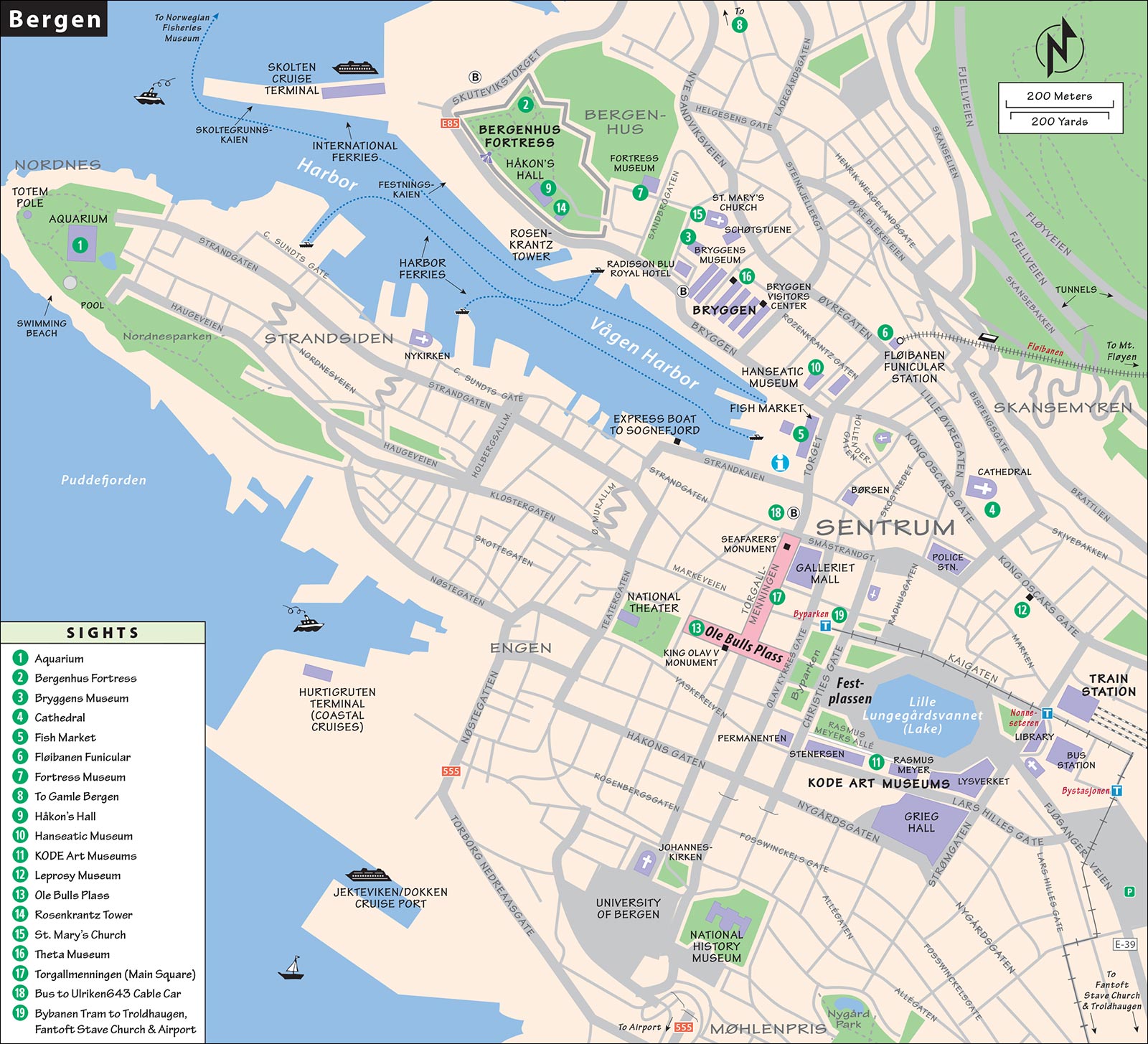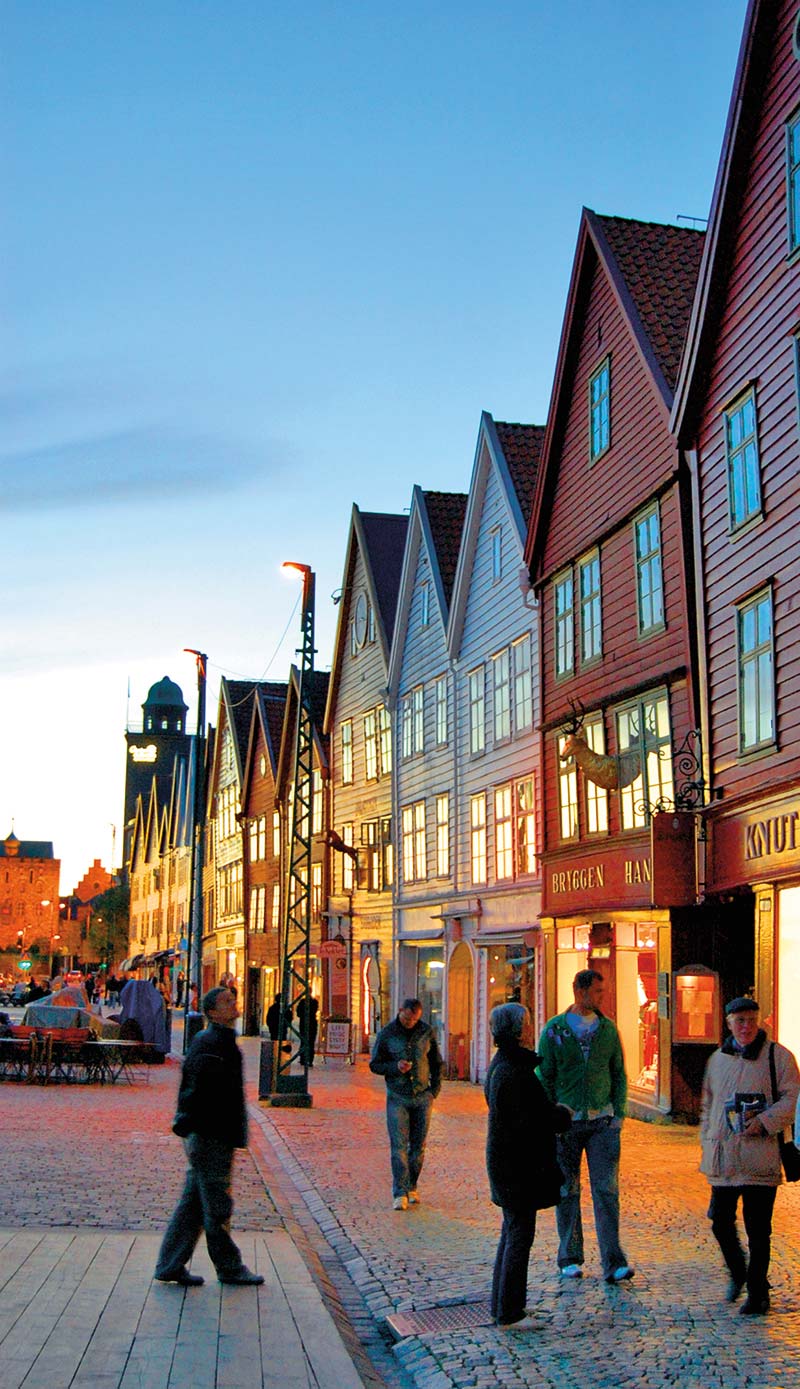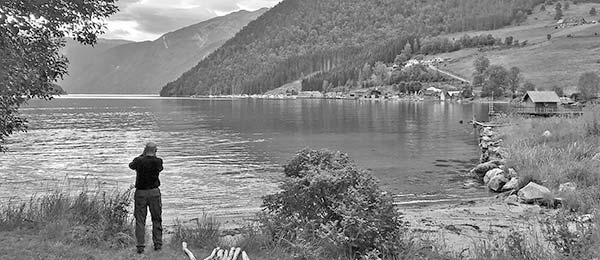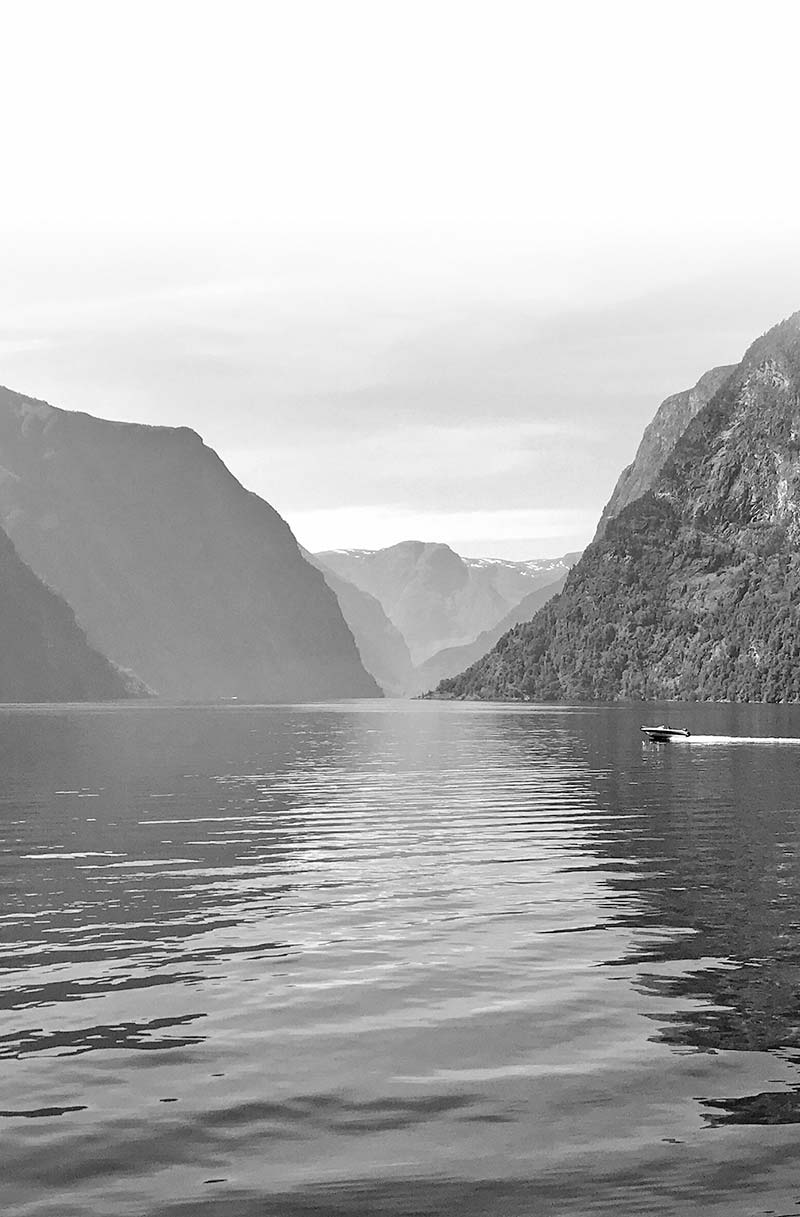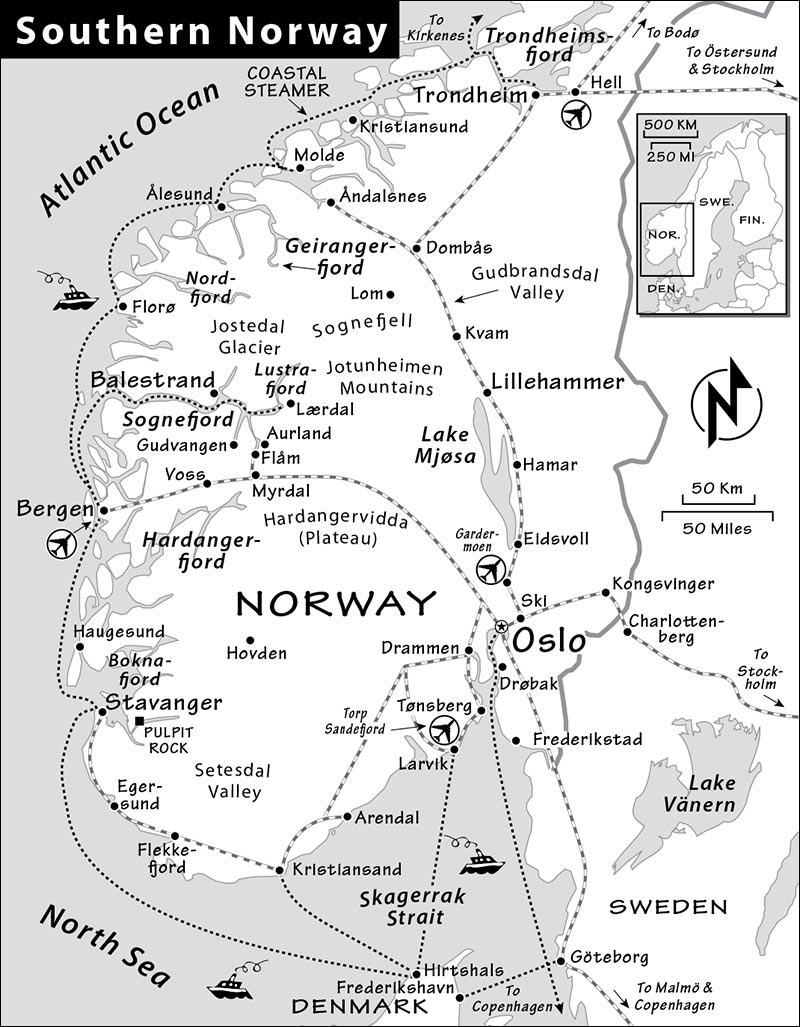Contents
Contents
Rick Steves
SNAPSHOT
Norway
This Snapshot guide, excerpted from my guidebook Rick Steves Scandinavia, introduces you to a land with modern European values and a great outdoors like nowhere elseNorway.
Start in Oslo, Norways sharp capital city, with its historic and walkable core and mural-slathered City Hall. Down on the pedestrian-friendly waterfront stroll along the promenade, clamber on the roof of the striking Opera House, marvel at the modernistic new Munch Museum, explore the Nazi Occupation at the stirring WWII Resistance Museum, and enjoy the outstanding National Museum (home to a version of Munchs Scream). A quick ferry ride takes you to the Bygdy peninsula and museums dedicated to famous shipsViking, Fram, and Kon-Tikiplus the Norwegian Folk Museum. Just beyond the center, hundreds of bronze and granite nudes adorn the majestic Vigeland Sculpture Park. Or, ride a tram above the city to relive Olympic memories at the Holmenkollen Ski Jump and breathe in sweeping views.
Then head for Norways countryside for a dose of natural wonder. The famous Norway in a Nutshell rideby train, ferry, and busshowcases the scenic splendor of the country, from snowcapped mountains to the striking Sognefjord. Choose a cozy fjordside hamlet (such as Balestrand, Solvorn, or Aurland) as your home base for touring mighty glaciers and evocative stave churches. Explore the Gudbrandsdal Valley, Lillehammers excellent open-air folk museum, and the impressive Jotunheimen Mountains.
Dip into Bergen, Norways salty port town, with its lively fish market, colorful Hanseatic quarter, and funicular to spectacular city views from the top of Mount Flyen. You can round out your Norwegian experience in the lively city of Stavanger (with a side trip to soaring Pulpit Rock), the time-passed Setesdal Valley, or the port of Kristiansand (with ferries to Denmark).
To help you have the best trip possible, Ive included the following topics in this book:
Planning Your Time, with advice on how to make the most of your limited time
Orientation, including tourist information (abbreviated as TI), tips on public transportation, local tour options, and helpful hints
Sights, and strategies for meaningful and efficient visits
Sleeping and Eating, with good-value recommendations in every price range
Connections, with tips on trains, buses, boats, and driving
Practicalities, near the end of this book, has information on money, staying connected, hotel reservations, transportation, and other helpful hints.
To travel smartly, read this little book in its entirety before you go. Its my hope that this guide will make your trip more meaningful and rewarding. Traveling like a temporary local, youll get the absolute most out of every mile, minute, and dollar.
God tur! Happy travels!
Norge
Norway is stacked with superlativesits the most mountainous, most scenic, and most prosperous of all the Scandinavian countries. It is also a land of rich harveststimber, oil, and fish. In fact, Norways wealth of resources is a major reason why Norwegians have voted nei to membership in the European Union. They dont want to be forced to share fishing rights with EU countries.
The countrys relatively recent independence (in 1905, from Sweden) makes Norwegians notably patriotic and proud of their traditions and history. They have a reputation for insularity, and controversially have tightened immigration laws over the past several years.
Norways Viking past (c. AD 800-1050) can still be seen today in the countrys 28 remaining stave churcheswith their decorative nods to Viking ship prowsand the artifacts housed in Oslos Viking Ship Museum. The Vikings, who also lived in present-day Denmark and Sweden, were great traders, shipbuilders, and explorers. However, they are probably best known for their infamous invasions, which terrorized much of Europe. The sight of their dragon-prowed ships on the horizon struck fear into the hearts of people from Ireland to the Black Sea.
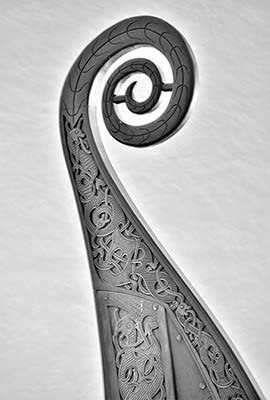
Named for the Norse word vik, which means bay or inlet, the Vikings sailed their sleek, seaworthy ships on extensive voyages, laden with amber and furs for tradingand weapons for fighting. They traveled up the Seine and deep into Russia, through the Mediterranean east to Constantinople, and across the Atlantic to Greenland and even Vinland (Canada). They touched the soil of the Americas centuries before Columbus, causing proud ya sure ya betcha Scandinavian immigrants in the US to display bumper stickers that boast, Columbus used a Viking map!
History and Hollywood have painted a picture of the Vikings as fierce barbarians, an image reinforced by the colorful names of leaders like Sven Forkbeard, Erik Bloodaxe, and Harald Bluetooth. Unless youre handy with an ax, these dont sound like the kind of men you want to hoist a tankard of mead with. They kept slaves and were all-around cruel (though there is no evidence that they forced their subjects to eat lutefisk).
But the Vikings also had a gentle side. Many were farmers, fishermen, and craftsmen who created delicate works with wood and metal. Faced with a growing population constrained by a lack of arable land, they traveled south not just to pillage and plunder, but in search of greener pastures. Sometimes they stayed and colonized, as in northeast England, which was called the Danelaw, or in northwest France, which became known as Normandy (Land of the North-men).


